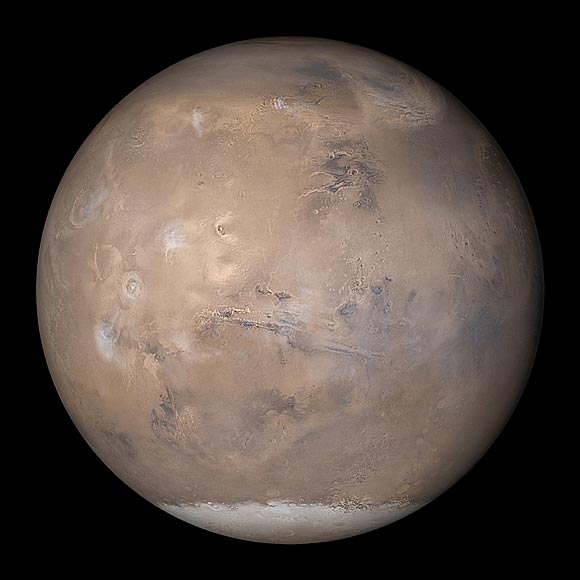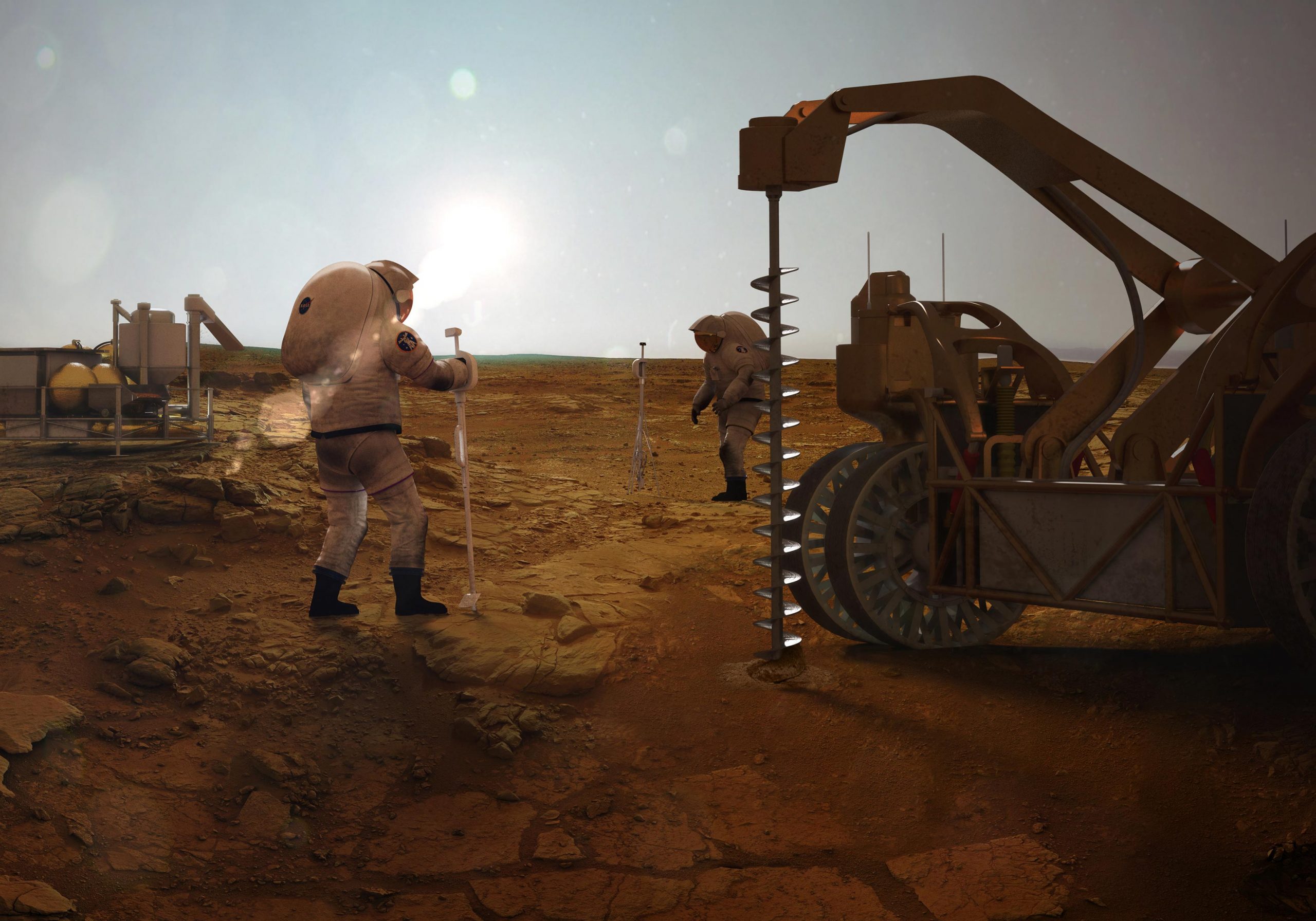Artist’s impression of astronauts drilling for water on Mars during a future manned mission to the red planet. Photo credit: NASA Langley Advanced Concepts Lab / Analytical Mechanics Staff
Recent scientific missions and results bring the search for life closer to home and scientists from the Center for Astrophysics | Harvard & Smithsonian (CfA) and the Florida Institute of Technology (FIT) may have figured out how to determine if life is lurking or lurking deep below the surface of Mars, the moon and other rocky objects in the universe.
While the search for life tends to focus on water found on the surface and in the atmosphere of objects, Dr. Avi Loeb, Frank B. Baird Jr., Professor of Science at Harvard University and CfA astronomer, and Dr. Manasvi Lingam, Assistant Professor of Astrobiology, suggest to FIT and CfA astronomers that the absence of surface water does not preclude the life potential on a rocky object such as deep in the subterranean biosphere.
“We studied whether life-threatening conditions could exist deep beneath the surface of rocky objects like the moon or Mars at some point in their history and how scientists can look on these objects for traces of past underground life,” said Lingam, who Lead author of the research. “We know this search will be technically challenging, but not impossible.”
One challenge for the researchers was to determine the potential for water to exist where there appears to be no water. “Surface water needs an atmosphere to maintain a finite pressure, without which liquid water cannot exist. However, when you move into deeper regions, the upper layers exert pressure, essentially enabling liquid water to exist, ”Lingam said. “For example, Mars does not currently have longstanding bodies of water on its surface, but it is known to have subterranean lakes.”

The view of Mars shown here was compiled from the daily global MOC images captured on May 12, 2003. Photo credit: NASA / JPL / Malin Space Science Systems
The research analyzes the “thickness” of the subterranean region – in which water and life could in principle exist – of the nearby rocky objects and whether the high pressures therein could exclude life altogether. According to Loeb, the answer is likely not. “Both the Moon and Mars lack an atmosphere where liquid water could be on their surfaces, but the warmer and pressurized areas below the surface could enable the chemistry of life in liquid water.”
Research also hit a limit on the amount of biological material that could be present in deep subterranean environments, and the answer, while small, is surprising. “We found that the limit for biological material can be a few percent of the limit of the Earth’s underground biosphere and is a thousand times smaller than Earth’s global biomass,” Loeb said, adding that cryophiles – organisms that live in extremely cold environments thrive – not only could potentially survive, but also multiply on seemingly lifeless rocky bodies. “Extremophilic organisms can grow and multiply at sub-zero temperatures. They occur in places that are permanently cold on earth, such as in the polar regions and in the deep sea, and can also exist on the moon or Mars. ”
Regarding the search for life underground on the moon and Mars, the researchers note that it will not be easy, as it will require search criteria and machines that are not yet used on any of the neighboring bodies. “There are many criteria for determining the best locations to look for life signs,” Lingam said. “Some of the things we considered when searching below the surface include drilling near the equator, where the subsurface biosphere is closer to the surface, and looking for geological hotspots with higher temperatures.” Regarding machines, Loeb added, “We must be able to drill tens of kilometers below the surface of Mars, and without geological activity exposing these deep layers, we will not be able to explore them.”
However, the challenges do not mean that it will be impossible to find life in the subterranean biosphere of a rocky body even in the near future. “Under the Artemis program, drilling could be possible to create a sustainable base on the moon by 2024. You can imagine robots and heavy machinery digging deep under the surface of the moon in search of life, just like we do in search of oil on Earth, ”Loeb said, adding that if future missions to Mars and to Moon bring to light underground life, the same principles could be applied to missions much further away. “Our study extends to all objects out there and actually implies that the habitable zone is much larger than traditionally thought, since science is currently only looking at life on the surface of the object.”
The research is published in The astrophysical diary letters.
Reference: “Potential for the biochemistry of liquid water deep beneath the surfaces of the moon, Mars and beyond” by Manasvi Lingam and Abraham Loeb, September 21, 2020, The astrophysical diary letters.
DOI: 10.3847 / 2041-8213 / abb608



